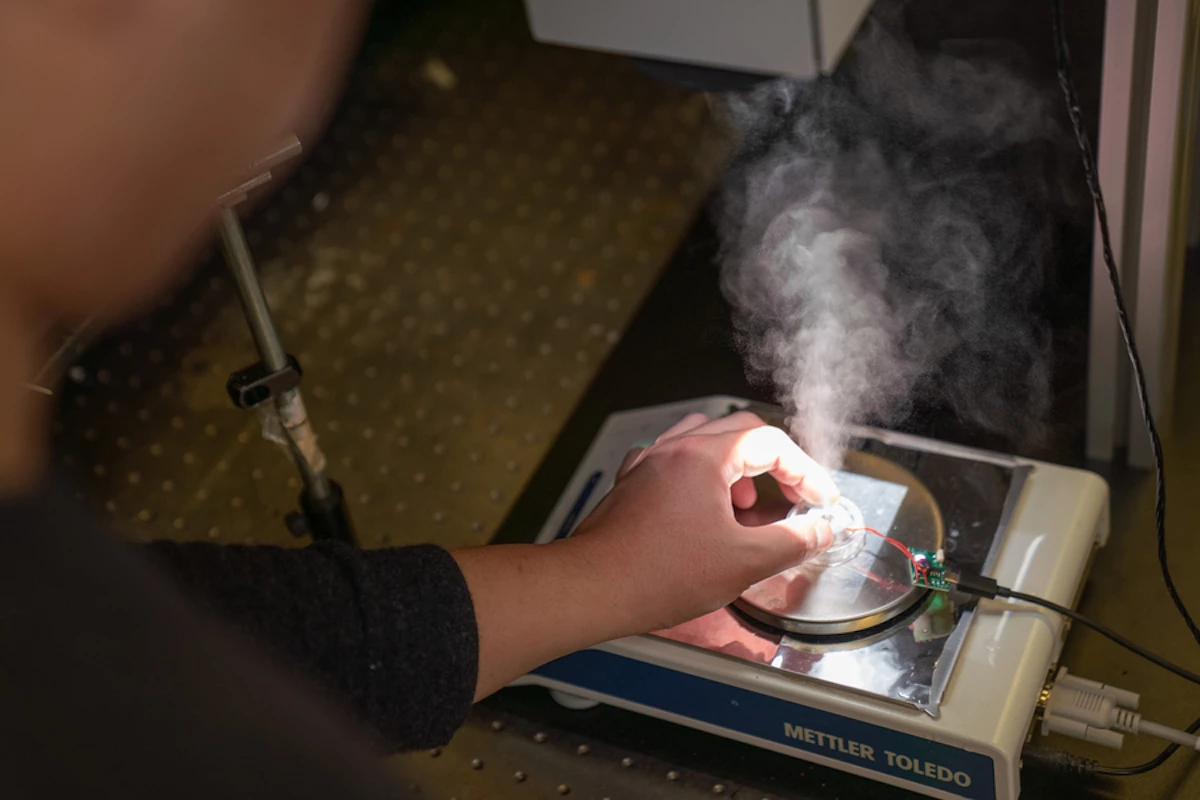We all know that water evaporates when the temperature climbs, but researchers have just shown that there's another factor at play. The breakthrough could solve long-standing atmospheric mysteries and lead to future technological advances.
What the MIT team discovered is that light in the visible spectrum is enough to knock water molecules loose at the surface where it meets air and send them floating away. In other words, while it's true that evaporation has been happening all of these years due to fluctuations in temperature, water has also been turning to vapor from the force of light beams alone.
The scientists have termed the process the "photomolecular effect" after the photoelectric effect that was explained by Einstein in 1905, in which particles of light could free electrons from atoms in the material they strike.
“The finding of evaporation caused by light instead of heat provides new disruptive knowledge of light-water interaction,” says Xiulin Ruan, professor of mechanical engineering at Purdue University. Ruan was not involved in the MIT study, which has been published in the journal PNAS.
“It could help us gain new understanding of how sunlight interacts with cloud, fog, oceans, and other natural water bodies to affect weather and climate," he added. "It has significant potential practical applications such as high-performance water desalination driven by solar energy. This research is among the rare group of truly revolutionary discoveries which are not widely accepted by the community right away but take time, sometimes a long time, to be confirmed.”
Solving a mystery
While the distinction between light-caused evaporation and heat-caused evaporation might not seem like a big one, the researchers say it could not only have a big impact on the way future evaporative projects are executed, but that it could also explain a long-standing discrepancy involving clouds.
Apparently, for about eight decades, measurements regarding the way in which clouds absorb sunlight often show that they soak up more sunlight than physics say is possible. The photomolecular effect on these clouds – which causes additional, unexpected evaporation – could help solve the puzzle.

Making sure
Because the discovery of light-based evaporation was so striking, the MIT researchers carried out 14 different verification experiments that all supported the finding. During the course of this process using laser light they found that the strongest evaporative effects happened when light that was polarized in a particular way known as transverse magnetic polarization hit the surface of the water at a 45° angle. It was also strongest with green light, which surprised the team because that's the color that makes water appear the most transparent because it interacts the least with it.
“The observations in the manuscript points to a new physical mechanism that foundationally alters our thinking on the kinetics of evaporation,” says Shannon Yee, an associate professor of mechanical engineering at Georgia Tech, who was also not associated with this work. “Who would have thought that we are still learning about something as quotidian as water evaporating?”
The researchers have already been approached by companies that feel the photomolecular effect could help their businesses, including one that would like to use it for drying paper at a mill and another seeking to use the process to evaporate syrup. While such applications might be possible, the researchers feel more work will benefit their findings exponentially.
“This phenomenon should be very general, and our experiment is really just the beginning,” says study co-author and MIT professor of power engineering, Gang Chen. "The experiments needed to demonstrate and quantify the effect are very time-consuming. There are many variables, from understanding water itself, to extending to other materials, other liquids and even solids."
Source: MIT





